notholaenids
Cloakferns and allies
Carl Rothfels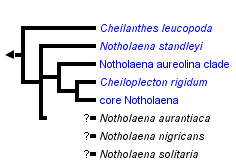


This tree diagram shows the relationships between several groups of organisms.
The root of the current tree connects the organisms featured in this tree to their containing group and the rest of the Tree of Life. The basal branching point in the tree represents the ancestor of the other groups in the tree. This ancestor diversified over time into several descendent subgroups, which are represented as internal nodes and terminal taxa to the right.

You can click on the root to travel down the Tree of Life all the way to the root of all Life, and you can click on the names of descendent subgroups to travel up the Tree of Life all the way to individual species.
For more information on ToL tree formatting, please see Interpreting the Tree or Classification. To learn more about phylogenetic trees, please visit our Phylogenetic Biology pages.
close boxIntroduction
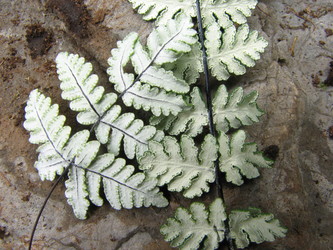
Underside of fertile leaves of Notholaena candida and Notholaena meridionalis. Note the dense coating of farina, and the sporangia confined to vein-tips (and protected by an at-most slightly modified leaf margin). © Carl Rothfels.
The notholaenids are an entirely New World group of ferns, adapted to xeric habitats. The clade includes approximately 38 species and is most diverse in Mexico and the southwest United States, although some species penetrate into the New World tropics, and one, Notholaena galapagensis, occurs on the Galapagos Islands. These are the small ferns that, along with members of Pellaea, Argyrochosma and Cheilanthes, are common in cliff-face crevices and nestled under rocks in the deserts of the US and Mexico. The genus-level treatment for this group is unresolved, pending further data, but it is clearly dominated by taxa traditionally treated in the large genus Notholaena. Most notholaenids are farinose, often bright white or occasionally yellowish beneath, with at-most weakly modified fertile leaf margins (Notholaena sensu Windham, 1993a); only a few taxa lack farina.
Notholaena—the genus that comprises most of the notholaenid clade—has been the focus of much of the historic taxonomic confusion within the cheilanthoids. Treatments for the genus have included taxa now recognized in genera as disparate as Argyrochosma, Astrolepis, and Paragymnopteris (in the pellaeids), Cheilanthes (including species from both the myriopterids and the hemionitids), and Cosentinia (in the pteridoids—not even a cheilanthoid). Alternatively, other authors have chosen to not recognize Notholaena at all, instead moving all its taxa into an expanded Cheilanthes (Copeland, 1947; Mickel, 1979). For a list of names published under Notholaena for species which should be excluded from this genus and their recommended treatment based on the most recent data, see Excluded Species.
The difficulty in establishing a stable circumscription for Notholaena is due to two factors. First, morphology-based generic boundaries in cheilanthoids are notoriously difficult. In response to their desert habitats, these ferns tend to evolve one of a small number of morphological syndromes, and thus similar-looking ferns may not be closely related (Gastony and Rollo, 1998; Rothfels et al., 2008). Only through careful morphological and cytogenetic study (Benham and Windham, 1992; Windham, 1987; Windham and Yatskievych, 2003) have natural groups been recognized, groups that are now supported by DNA data (Gastony and Rollo, 1998; Kirkpatrick, 2007; Rothfels et al., 2008). Secondly, the generic name Notholaena was lectotypified three times, based on three distantly related taxa (one notholaenid, one hemionitid, and one pellaeid; Rothfels et al., 2008; Yatskievych and Smith, 2003). Two of these types (N. marantae—the pellaeid, and N. trichomanoides—the notholaenid) are still in active use, so, depending on the worker, the name Notholaena could be being applied to entirely different clades. Yatskievych and Smith (2003) presented convincing arguments against overturning the first lectotypification (N. trichomanoides), and thus I treat N. trichomanoides and its allies as Notholaena, and treat N. marantae under Paragymnopteris (see Rothfels et al. 2008).
Characteristics
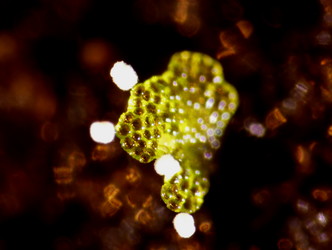
Gametophyte of Notholaena californica ssp. californica. Note the farina "pom-poms." The presence of farina on the gametophytes may be a synapomorphy for the notholaenids. © Carl Rothfels
The notholaenids, centered around Notholaena as circumscribed above, are a diverse and disparate group, containing approximately 38 species, 29 of which occur in Mexico (Mickel and Smith, 2004). The 11 notholaenid species that occur in the USA (Windham, 1993b) contribute to the seemingly unlikely fact that Arizona (which, with all its deserts, doesn’t seem like the most fern-friendly place) has the 5th highest number of fern species of all US states. While notholaenids show some clear trends (presence of farina; absence of false indusia), members of the clade as a whole are united by very few obvious characters. In general, notholaenids are farinose, have (at most) a weakly differentiated leaf margin (false indusium), and a tendency towards pentagonal leaves. They all share a chromosome base number of x=30 (the morphologically similar but distantly related Argyrochosma has a base number of x=27), and the species studied thus far all have farina on their gametophytes. This latter feature—farinose gametophytes—may be a synapomorphy for the clade (Giauque, 1949; Rothfels et al., 2008), but more study is needed.
Included in the notholaenids are a number of morphologically anomalous taxa. The Central American genus Cheiloplecton is strongly supported as a member of this clade, despite being nonfarinose and having a distinctive strongly inrolled false indusium (Rothfels et al., 2008). It has always posed a taxonomic challenge (it has names under both Pellaea and Cheilanthes), but, prior to DNA data, was never considered close to Notholaena. The N. aureolina clade is comprised of four taxa, most of which have only recently been placed in the notholaenids (Rothfels et al., 2008) and given names under Notholaena (Yatskievych and Arbeláez, 2008). Three of them are farinose, but with an unusual bright yellow or orange farina color and well developed false indusia (otherwise very rare in Notholaena). The fourth member of this group—Notholaena brachypus—lacks farina, and is instead densely hairy and scaly. Finally, sister to the rest of the clade is another anomalous species, the nonfarinose Cheilanthes leucopoda. It has unusual sticky-glandular pentagonal leaves; in gross morphology it more closely resembles the myriopterids, where it has traditionally been treated.
Discussion of Phylogenetic Relationships
The molecular phylogenetic study of Rothfels et al. (2008) used plastid DNA sequences to investigate relationships in the notholaenids and revealed five clades that are convenient handles for discussion of this group: Cheilanthes leucopoda; Notholaena standleyi; the N. aureolina clade; Cheiloplecton; and core Notholaena. Each of these clades is well supported by molecular data; however, relationships within them may be less certain, and the position of a number of unsampled taxa is as yet unresolved.
- Cheilanthes leucopoda: A relationship between this species and Notholaena s. s. was first suggested by the molecular phylogeny of Gastony and Rollo (1998), and confirmed by Rothfels et al. (2008).
- Notholaena standleyi: The position of N. standleyi was perhaps the greatest surprise of the Rothfels et al. (2008) study. This species is very similar to Notholaena sulphurea in virtually all features and has even been treated as a variety of that species by some authors (as Notholaena sulphurea var. quinquefidopalmata Farw.). Yet the two taxa are resolved in very different places: N. standleyi is one of the early-diverging notholaenid branches, while N. sulphurea is nested deep within the core Notholaena. The position of N. standleyi renders Notholaena sensu Windham (1993a) paraphyletic by the inclusion of the N. aureolina clade and Cheiloplecton (see below).
- The N. aureolina clade: This clade encompasses four taxa, three of which have been included in phylogenetic studies (Rothfels et al., 2008). The unsampled species (N. jaliscana) is believed to fall here, based on its similarity to Notholaena aureolina (one of the studied species; Yatskievych and Arbeláez, 2008).
- Cheiloplecton: While earlier molecular studies placed Cheiloplecton close to Notholaena (Gastony and Rollo, 1995; Gastony and Rollo, 1998), it was not until N. standleyi was sampled (Rothfels et al., 2008) that it became clear that this genus is nested within Notholaena sensu Windham (1993a).
- Core Notholaena: This is a clade of approximately 26 species, all of which are small, farinose ferns of dry habitats. These species comprise the genus Notholaena sensu Windham (1993a) and Mickel and Smith (2004), with the exception of N. standleyi, which here falls outside of core Notholaena.
Additionally, there are three species whose phylogenetic position is uncertain, and whose morphology is sufficiently unusual that I treat them here as incertae cedis: N. aurantiaca, N. nigricans, and N. solitaria.
Among the taxa historically treated within Notholaena, two deserve particular mention: Notholaena nivea and its allies are here segregated as the genus Argyrochosma (Windham, 1987), and Notholaena sinuata and its allies are treated in Astrolepis (Benham and Windham, 1992). Both genera are in the pellaeid clade, and are thus only distantly related to the notholaenids.
Excluded Species
For reasons outlined in the Introduction, many taxa have names in the genus Notholaena, but are not members of the notholaenids (and thus are not closely related to Notholaena as treated here). Below is a list of such names, with a suggested synonym and phylogenetic placement for each (where available).
| Name under Notholaena | Suggested synonym and phylogenetic placement |
|---|---|
| Notholaena arequipensis Maxon 1915 | Cheilanthes arequipensis (Hemionitid) |
| Notholaena atropurpurea (L.) Keyserl. 1873 | Pellaea atropurpurea (Pellaeid) |
| Notholaena aurea (Poir.) Desv. 1827 | Cheilanthes bonariensis (Myriopterid) |
| Notholaena balansae Baker | Cheilanthes obducta (Hemionitid) |
| Notholaena bonariensis (Willd.) C. Chr. 1905 | Cheilanthes bonariensis (Myriopterid) |
| Notholaena brackenridgei Baker 1868 | Notholaena peruviana (Hemionitid) |
| Notholaena brownii Desv. 1827 | Cheilanthes brownii (Hemionitid) |
| Notholaena buchanani Baker 1868 | Hemionitid? |
| Notholaena buchtienii Rosenst. 1908 | Hemionitid |
| Notholaena bureaui H. Christ 1905 | Paragymnopteris delavayi (Pellaeid) |
| Notholaena canariense (Willd.) Desv. 1827 | Paragymnopteris marantae (Pellaeid) |
| Notholaena cantangensis R.M. Tryon 1961 | Cheilanthes cantangensis (Hemionitid?) |
| Notholaena chalcolepis A. Braun ex Kunze 1839 | Astrolepis (Pellaeid) |
| Notholaena chiapensis Rovirosa 1909 | Cheilanthes bonariensis (Myriopterid) |
| Notholaena chilensis Sturm | Argyrochosma (Pellaeid) |
| Notholaena chinensis Baker 1880 | Cheilanthes chinensis (Hemionitid?) |
| Notholaena chrysophylla Kl. 1855 | Argyrochosma nivea (Pellaeid) |
| Notholaena cinnamomea Baker 1874 | Cheilanthes tryonii (Hemionitid?) |
| Notholaena cochisensis Goodd. 1912 | Astrolepis (Pellaeid) |
| Notholaena crassifolia Houlston & T. Moore 1851 | Astrolepis (Pellaeid) |
| Notholaena dealbata (Pursh) Kunze 1848 | Argyrochosma (Pellaeid) |
| Notholaena delavayi (Baker) C. Chr. 1931 | Paragymnopteris delavayi (Pellaeid) |
| Notholaena delicatula Maxon & Weath. 1939 | Argyrochosma (Pellaeid) |
| Notholaena deltoidea Baker 1874 | Astrolepis (Pellaeid) |
| Notholaena densa J. Sm. 1841 | Cheilanthes nudiuscula (Hemionitid) |
| Notholaena doradilla Colla 1836 | Notholaena mollis (Hemionitid) |
| Notholaena eckloniana Kunze | Cheilanthes eckloniana (Hemionitid) |
| Notholaena eriophora Fée 1852 | Hemionitid |
| Notholaena fendleri Kunze 1851 | Argyrochosma (Pellaeid) |
| Notholaena ferruginea (Desv.) Desv. 1813 | Cheilanthes bonariensis (Myriopterid) |
| Notholaena flavens (Sw.) T. Moore 1857 | Argyrochosma nivea (Pellaeid) |
| Notholaena formosa (Liebm.) R.M. Tryon 1956 | Argyrochosma (Pellaeid) |
| Notholaena fraseri (Mett. ex Kuhn) Baker 1874 | Cheilanthes fraseri (Hemionitid) |
| Notholaena geraniifolia Weath. 1946 | Cheilanthes geraniifolia (Hemionitid?) |
| Notholaena goyazensis Taub. 1896 | Cheilanthes goyazensis (Hemionitid) |
| Notholaena hassleri Weath. 1941 | Hemionitid? |
| Notholaena herzogii Rosenst. 1908 | Notholaena obducta (Hemionitid) |
| Notholaena himalaica Fraser-Jenk. 1997 | Paragymnopteris vestita (Pellaeid) |
| Notholaena hirsuta (Poir.) Desv. 1813 | Cheilanthes nudiuscula (Hemionitid) |
| Notholaena hookeri Lowe 1856 | Argyrochosma nivea (Pellaeid) |
| Notholaena inaequalis Kunze 1844 | Cheilanthes inaequalis (Hemionitid) |
| Notholaena incana C. Presl 1825 | Argyrochosma (Pellaeid) |
| Notholaena integerrima (Hook.) Hevly 1865 | Astrolepis (Pellaeid) |
| Notholaena javensis (Willd.) Desv. 1827 | Cheilanthes nudiuscula (Hemionitid) |
| Notholaena jonesii Maxon 1917 | Argyrochosma (Pellaeid) |
| Notholaena laevis M. Martens & Galeotti 1842 | Astrolepis (Pellaeid) |
| Notholaena lanceolata Bonap. 1917 | Hemionitid |
| Notholaena lanuginosa Desv. ex Poir. | Cosentinia (Pteridoid) |
| Notholaena leachii Schelpe | Hemionitid |
| Notholaena lepigera Baker 1884 | Anemiaceae |
| Notholaena lilloi (Hicken) Hicken 1909 | Notholaena squamosa (Hemionitid) |
| Notholaena limitanea Maxon 1919 | Argyrochosma (Pellaeid) |
| Notholaena lonchophylla R.M. Tryon 1956 | Hemionitid |
| Notholaena lumholtzii Maxon & Weath. 1939 | Argyrochosma lumholtzii (Pellaeid) |
| Notholaena madagascarica Bonap. 1917 | Notholaena lanceolata var. madagascarica (Hemionitid) |
| Notholaena marantae (L.) R. Br. 1810 | Paragymnopteris marantae (Pellaeid) |
| Notholaena marlothii Hieron. | Hemionitid |
| Notholaena mathewsii (Kunze) Griseb. 1874 | Cheilanthes pruinata (Hemionitid) |
| Notholaena microphylla (Sw.) Keyserl. 1873 | Cheilanthes microphylla (Myriopterid) |
| Notholaena mollis Kunze 1834 | Hemionitid |
| Notholaena newberryi D.C. Eaton 1873 | Cheilanthes newberryi (Myriopterid) |
| Notholaena nivea (Poir.) Desv. 1813 | Argyrochosma (Pellaeid) |
| Notholaena nudiuscula (R. Br.) Desv. 1827 | Hemionitid |
| Notholaena obducta (Mett. ex Kuhn) Baker 1874 | Hemionitid |
| Notholaena pallens Weath. 1956 | Argyrochosma (Pellaeid) |
| Notholaena palmeri Baker 1887 | Argyrochosma (Pellaeid) |
| Notholaena parryi D.C. Eaton 1875 | Cheilanthes parryi (Myriopterid) |
| Notholaena parvifolia R.M. Tryon 1956 | Argyrochosma (Pellaeid) |
| Notholaena peninsularis Maxon & Weath. 1939 | Argyrochosma (Pellaeid) |
| Notholaena persica Bory 1833 | Cheilanthes persica (Hemionitid?) |
| Notholaena peruviana Desv. 1827 | Hemionitid |
| Notholaena pilifera R.M. Tryon 1956 | Argyrochosma (Pellaeid) |
| Notholaena pruinosa Fée 1857 | Astrolepis crassifolia (Pellaeid) |
| Notholaena pteridiformis (Ces.) Baker 1886 | Thysanosoria pteridiformis (Lomariopsidaceae) |
| Notholaena pulchella Kunze 1843 | Argyrochosma dealbata (Pellaeid) |
| Notholaena pulveracea Kunze 1839 | Notholaena pulveracea Kunze 1839 |
| Notholaena rawsonii Pappe | Cheilanthes rawsonii (Hemionitid) |
| Notholaena reynoldsii F. Muell. 1874 | Paraceterach reynoldsii (Pellaeid) |
| Notholaena rufa C. Presl 1825 | Pellaea rufa (Pellaeid) |
| Notholaena rufidula (Michx.) Desv. 1827 | Woodsia ilvensis (Woodsiaceae) |
| Notholaena sargentii (H. Christ) Fraser-Jenk. 1997 | Paragymnopteris sargentii (Pellaeid) |
| Notholaena semiglabra Kunze 1850 | Cheilanthes tenuifolia (Hemionitid) |
| Notholaena setigera Desv. 1813 | Woodsia ilvensis (Woodsiaceae) |
| Notholaena sinuata (Lag. ex Sw.) Kaulf. 1824 | Astrolepis (Pellaeid) |
| Notholaena squamosa (Gillies & Hook. ex Grev.) Lowe 1856 | Hemionitid |
| Notholaena steyermarkii Vareschi 1966 | Cheilanthes eriophora (Hemionitid?) |
| Notholaena streetiae Baker 1877 | Cheilanthes bergiana (Hemionitid?) |
| Notholaena stuebeliana (Hieron.) R.M. Tryon 1961 | Argyrochosma (Pellaeid) |
| Notholaena sulcata Link 1833 | Cheilanthes nudiuscula (Hemionitid) |
| Notholaena tectaria Desv. 1827 | Astrolepis sinuata (Pellaeid) |
| Notholaena tenera Gillies ex Hook. 1831 | Argyrochosma (Pellaeid) |
| Notholaena ternifolia (Cav.) Keyserl. 1873 | Pellaea ternifolia (Pellaeid) |
| Notholaena tomentosa (Desv.) Desv. 1813 | Cheilanthes hypoleuca (Hemionitid) |
| Notholaena tricholepis Baker 1883 | Cheilanthes tricholepis (Hemionitid?) |
| Notholaena vellea R. Br. | Cheilanthes brownii (Hemionitid) |
| Notholaena vellea Desv. | Cosentinia vellea (Pteridoid) |
| Notholaena velutina Tardieu & C. Chr. | Cheilanthes velutina (Hemionitid) |
| Notholaena venusta Brade 1940 | Cheilanthes bradei (Hemionitid?) |
| Notholaena vestita Desv. 1813 | Cheilanthes lanosa (Myriopterid) |
The above list was formulated around the data from Tropicos, with input from the International Plant Names Index, and Hassler and Swale's Checklist of World Ferns. Much of the information about probable phylogenetic placement is due to data generated by Kathleen Pryer's lab; Layne Huiet generated much of these data, and was particularly helpful in formulating this list.
References
Benham, D. M., and M. D. Windham. 1992. Generic affinities of the star-scaled cloak ferns. American Fern Journal 82:47-58.
Brown, R. 1810. Prodromus Florae Novae Holandiae et Insulae Van-Diemen. Richard Taylor & Sons, London.
Copeland, E. B. 1947. Genera Filicum. Chronica Botanica Co., Waltham.
Gastony, G. J., and D. R. Rollo. 1995. Phylogeny and generic circumscriptions of cheilanthoid ferns (Pteridaceae: Cheilanthoideae) inferred from rbcL nucleotide sequences. American Fern Journal 85:341-360.
Gastony, G. J., and D. R. Rollo. 1998. Cheilanthoid ferns (Pteridaceae: Cheilanthoideae) in the southwestern United States and adjacent Mexico--A molecular phylogenetic reassessment of generic lines. Aliso 17:131-144.
Giauque, M. F. A. 1949. Wax glands and prothallia. American Fern Journal 39:33-35.
Hall, C. C. 1950. Notholaena copelandii, a newly recognized species of the Texano-Mexican region. American Fern Journal 40:178--187.
Hassler, M., and B. Swale. 2003. Checklist of World Ferns. http://homepages.caverock.net.nz/~bj/fern/
Hevly, R. H. 1963. Adaptations of cheilanthoid ferns to desert environments. Journal of the Arizona Academy of Science 2:164-175.
Kirkpatrick, R. E. B. 2007. Investigating the monophyly of Pellaea (Pteridaceae) in the context of a phylogenetic analysis of cheilanthoid ferns. Systematic Botany 32:504-518.
Kramer, K. U. 1990. Notes on the higher level classification of the recent ferns. Pages 49--52 in The Families and Genera of Vascular Plants (K. U. Kramer, and P. S. Green, eds.). Springer-Verlag, Berlin.
Lellinger, D. B. 1989. The ferns and fern-allies of Costa Rica, Panama, and the Chocó (Part 1: Psilotaceae through Dicksoniaceae). Pteridologia 2A:1-364.
Mickel, J. T. 1979. The fern genus Cheilanthes in continental United States. Phytologia 41:431-437.
Mickel, J. T., and A. R. Smith. 2004. The Pteridophytes of Mexico. The New York Botanical Garden Press, New York.
NatureServe. 2008. NatureServe Explorer, Arlington, Virginia. www.natureserve.org/explorer/
Pichi Sermolli, R. E. G. 1989. Again on the typification of the generic name Notholaena R. Brown. Webbia 43:301-310.
Prado, J., C. D. N. Rodrigues, A. Salatino, and M. L. F. Salatino. 2007. Phylogenetic relationships among Pteridaceae, including Brazilian species, inferred from rbcL sequences. Taxon 56:355-368.
Rothfels, C. J., M. D. Windham, A. L. Grusz, G. J. Gastony, and K. M. Pryer. 2008. Toward a monophyletic Notholaena (Pteridaceae): Resolving patterns of evolutionary convergence in xeric-adapted ferns Taxon 57:712-724.
Schuettpelz, E., H. Schneider, L. Huiet, M. D. Windham, and K. M. Pryer. 2007. A molecular phylogeny of the fern family Pteridaceae: assessing overall relationships and the affinities of previously unsampled genera. Molecular Phylogenetics and Evolution 44:1172-1185.
Seigler, D. S., and E. Wollenweber. 1983. Chemical variation in Notholaena standleyi. American Journal of Botany 70:790-798.
Tryon, R. M. 1956. A revision of the American species of Notholaena. Contributions from the Gray Herbarium 179:1-106.
Tryon, R. M., and A. F. Tryon. 1973. Geography, spores, and evolutionary relations in the cheilanthoid ferns. Pages 145-153 in The phylogeny and classification of ferns. (A. C. Jermy, J. A. Crabbe, and B. A. Thomas, eds.). Academic Press, New York.
Tryon, R. M., and A. F. Tryon. 1982. Ferns and Allied Plants with Special Reference to Tropical America. Springer-Verlag, New York.
Tryon, R. M., A. F. Tryon, and K. U. Kramer. 1990. Pteridaceae. Pages 404 in The Families and Genera of Vascular Plants (K. U. Kramer, and P. S. Green, eds.). Springer-Verlag, Berlin.
Windham, M. D. 1987. Argyrochosma, a new genus of cheilanthoid ferns. American Fern Journal 77:37-41.
Windham, M. D. 1993a. Notholaena. Pages 143--149 in Flora of North America (Flora of North American Editorial Committee, ed.) Oxford University Press, New York.
Windham, M. D. 1993b. Pteridaceae. Pages 122--124 in Flora of North America (Flora of North American Editorial Committee, ed.) Oxford University Press, New York.
Windham, M. D., L. Huiet, E. Schuettpelz, C. J. Rothfels, J. Beck, A. L. Grusz, G. Yatskievych, and K. M. Pryer. 2008. Using plastid and nuclear DNA sequences to redraw generic boundaries and demystify species complexes in cheilanthoid ferns. American Fern Journal (in review).
Windham, M. D., and G. Yatskievych. 2003. Chromosome studies of cheilanthoid ferns (Pteridaceae: Cheilanthoideae) from the western United States and Mexico. American Journal of Botany 90:1788-1800.
Wollenweber, E. 1984. Exudate flavonoids of Mexican ferns as chemotaxonomic markers. Rev. Latinoamer. Quim. 15:3-11.
Wollenweber, E., and H. Schneider. 2000. Lipophilic exudates of Pteridaceae -- chemistry and chemotaxonomy. Biochemical Systematics and Ecology 28:751-777.
Title Illustrations

| Scientific Name | Cheilanthes leucopoda |
|---|---|
| Location | USA, Texas |
| Specimen Condition | Live Specimen |
| Identified By | C.J.Rothfels |
| Image Use |
 This media file is licensed under the Creative Commons Attribution-NonCommercial License - Version 3.0. This media file is licensed under the Creative Commons Attribution-NonCommercial License - Version 3.0.
|
| Copyright |
© Carl Rothfels

|
| Scientific Name | Notholaena standleyi |
|---|---|
| Location | USA, Arizona, Molino Canyon |
| Comments | Yellow chemotype? |
| Acknowledgements | Reproduced, with permission, from Arizona Ferns |
| Identified By | J.Metzgar |
| Image Use |
 This media file is licensed under the Creative Commons Attribution License - Version 3.0. This media file is licensed under the Creative Commons Attribution License - Version 3.0.
|
| Copyright |
© 2005 Jordan Metzgar

|
| Scientific Name | Notholaena meridionalis |
|---|---|
| Location | Costa Rica, Prov. de Guanacaste, Palo Verde National Park |
| Specimen Condition | Live Specimen |
| Identified By | C.J.Rothfels |
| Image Use |
 This media file is licensed under the Creative Commons Attribution-NonCommercial License - Version 3.0. This media file is licensed under the Creative Commons Attribution-NonCommercial License - Version 3.0.
|
| Copyright |
© Carl Rothfels

|
| Scientific Name | Notholaena ochracea |
|---|---|
| Location | Mexico, Mexico |
| Specimen Condition | Live Specimen |
| Identified By | C.J.Rothfels |
| Image Use |
 This media file is licensed under the Creative Commons Attribution-NonCommercial License - Version 3.0. This media file is licensed under the Creative Commons Attribution-NonCommercial License - Version 3.0.
|
| Copyright |
© 2009 Carl Rothfels

|
About This Page
Carl Rothfels

Duke University, Durham, North Carolina, USA
Correspondence regarding this page should be directed to Carl Rothfels at
Page copyright © 2008 Carl Rothfels
 Page: Tree of Life
notholaenids. Cloakferns and allies.
Authored by
Carl Rothfels.
The TEXT of this page is licensed under the
Creative Commons Attribution-NonCommercial License - Version 3.0. Note that images and other media
featured on this page are each governed by their own license, and they may or may not be available
for reuse. Click on an image or a media link to access the media data window, which provides the
relevant licensing information. For the general terms and conditions of ToL material reuse and
redistribution, please see the Tree of Life Copyright
Policies.
Page: Tree of Life
notholaenids. Cloakferns and allies.
Authored by
Carl Rothfels.
The TEXT of this page is licensed under the
Creative Commons Attribution-NonCommercial License - Version 3.0. Note that images and other media
featured on this page are each governed by their own license, and they may or may not be available
for reuse. Click on an image or a media link to access the media data window, which provides the
relevant licensing information. For the general terms and conditions of ToL material reuse and
redistribution, please see the Tree of Life Copyright
Policies.
- First online 23 December 2008
- Content changed 23 December 2008
Citing this page:
Rothfels, Carl. 2008. notholaenids. Cloakferns and allies. Version 23 December 2008. http://tolweb.org/notholaenids/133570/2008.12.23 in The Tree of Life Web Project, http://tolweb.org/





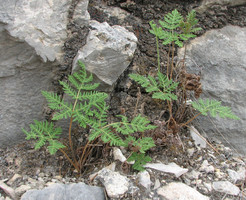
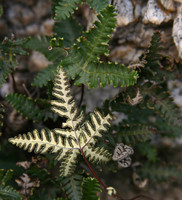
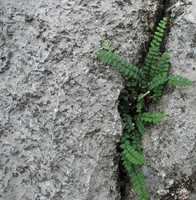
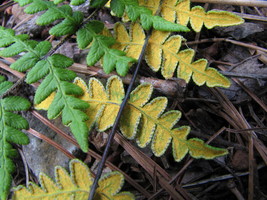
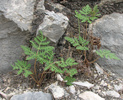


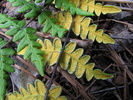

 Go to quick links
Go to quick search
Go to navigation for this section of the ToL site
Go to detailed links for the ToL site
Go to quick links
Go to quick search
Go to navigation for this section of the ToL site
Go to detailed links for the ToL site